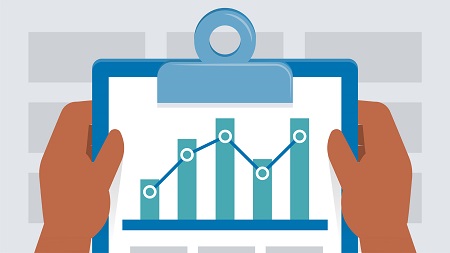
English | MP4 | AVC 1280×720 | AAC 48KHz 2ch | 2h 09m | 250 MB
Microsoft Excel is an important tool for data analysis. It helps companies accurately assess situations and make better business decisions. This course helps you unlock the power of your organization’s data using the data analysis and visualization tools built into Excel. Author Curt Frye starts with the foundational concepts, including basic calculations such as mean, median, and standard deviation, and provides an introduction to the central limit theorem. He then shows how to visualize data, relationships, and future results with Excel’s histograms, graphs, and charts. He also covers testing hypotheses, modeling different data distributions, and calculating the covariance and correlation between data sets. Finally, he reviews the process of calculating Bayesian probabilities in Excel. Each chapter includes practical examples that show how to apply the techniques to real-world business problems.
Topics include:
- Calculating mean and median values
- Analyzing data using variance and standard deviation
- Working with sample data
- Minimizing errors
- Visualizing data with histograms, charts, and more
- Testing hypotheses
- Measuring covariance and correlation
- Performing Bayesian analysis
Table of Contents
1 The power of data analysis using Excel
2 What you should know
3 Calculate mean and median values
4 Measure maximums, minimums, and other data characteristics
5 Analyze data using variance and standard deviation
6 Introducing the central limit theorem
7 Analyze a population using data samples
8 Identify and minimize sources of error
9 Group data using histograms
10 Identify relationships using XY scatter charts
11 Visualize data using logarithmic scales
12 Add trendlines to charts
13 Forecast future results
14 Calculate running averages
15 Formulate a hypothesis
16 Interpret the results of your analysis
17 Consider the limits of hypothesis testing
18 Use the normal distribution
19 Use the exponential distribution
20 Use a uniform distribution
21 Use the binomial distribution
22 Use the Poisson distribution
23 Visualize what covariance means
24 Calculate covariance between two columns of data
25 Calculate covariance among multiple pairs of columns
26 Visualize what correlation means
27 Calculate correlation between two columns of data
28 Calculate correlation among multiple pairs of columns
29 Introduce Bayesian analysis
30 Analyze a sample problem Kahneman’s Cabs
31 Create a classification matrix
32 Calculate Bayesian probabilities in Excel
33 Update your Bayesian analysis
34 Further resources
Resolve the captcha to access the links!